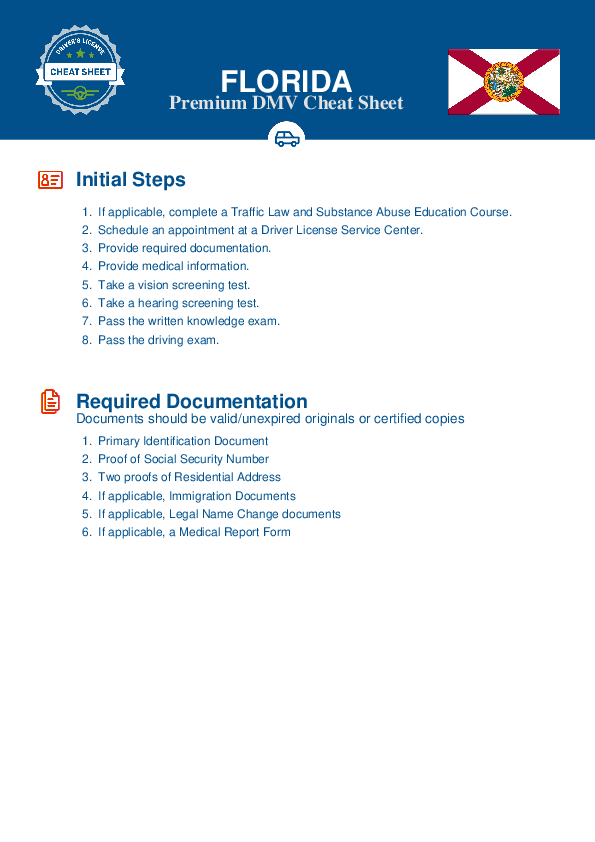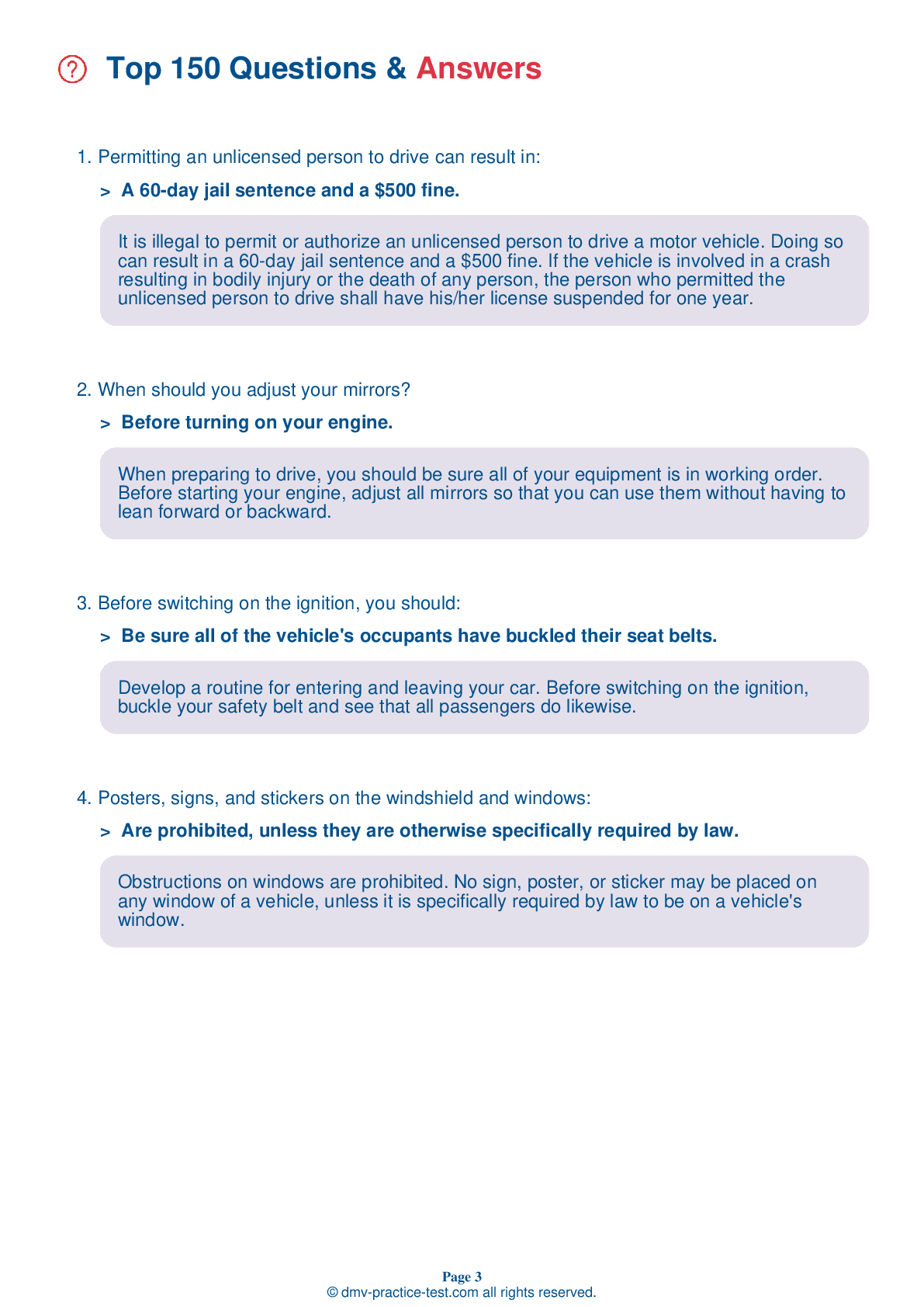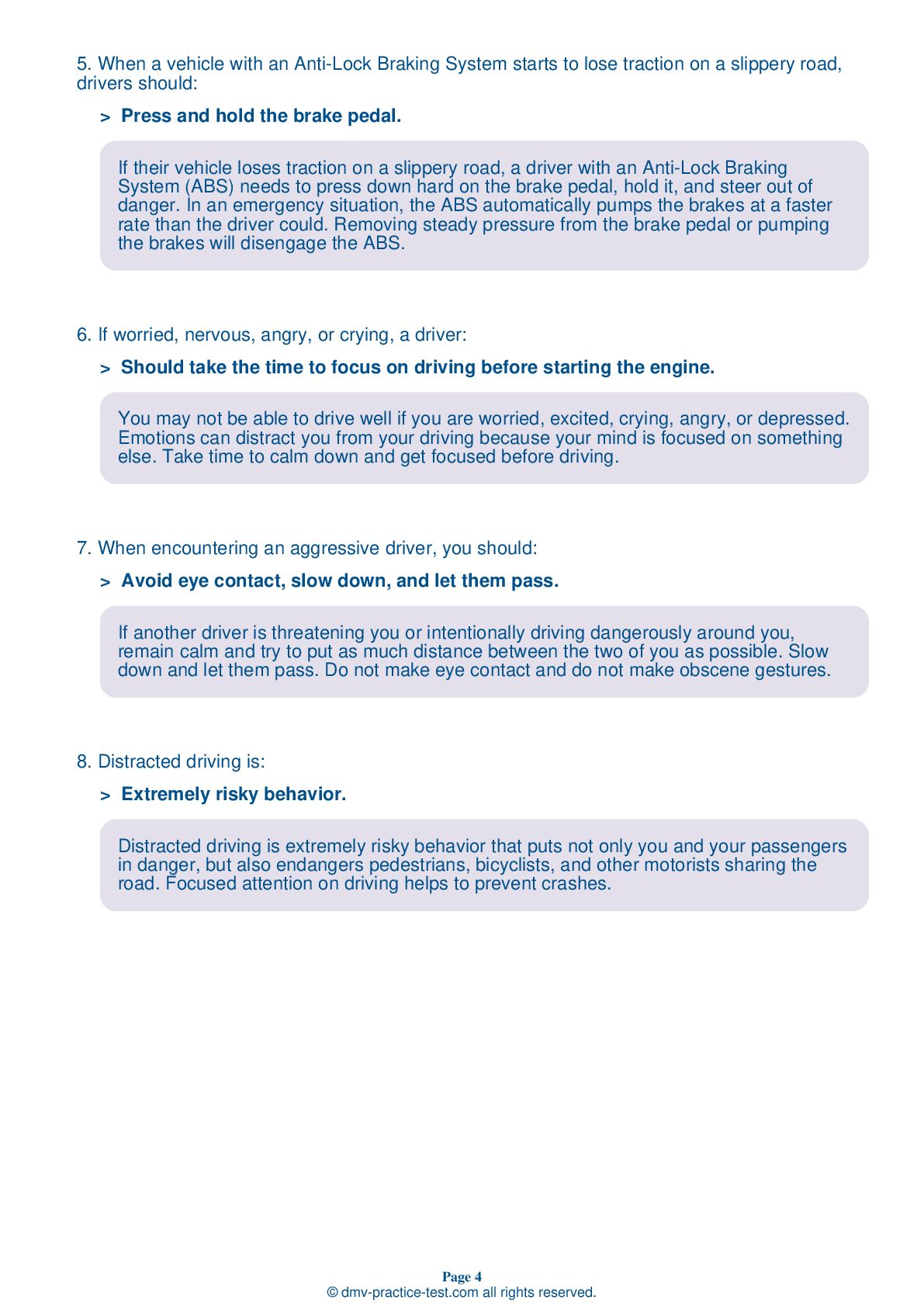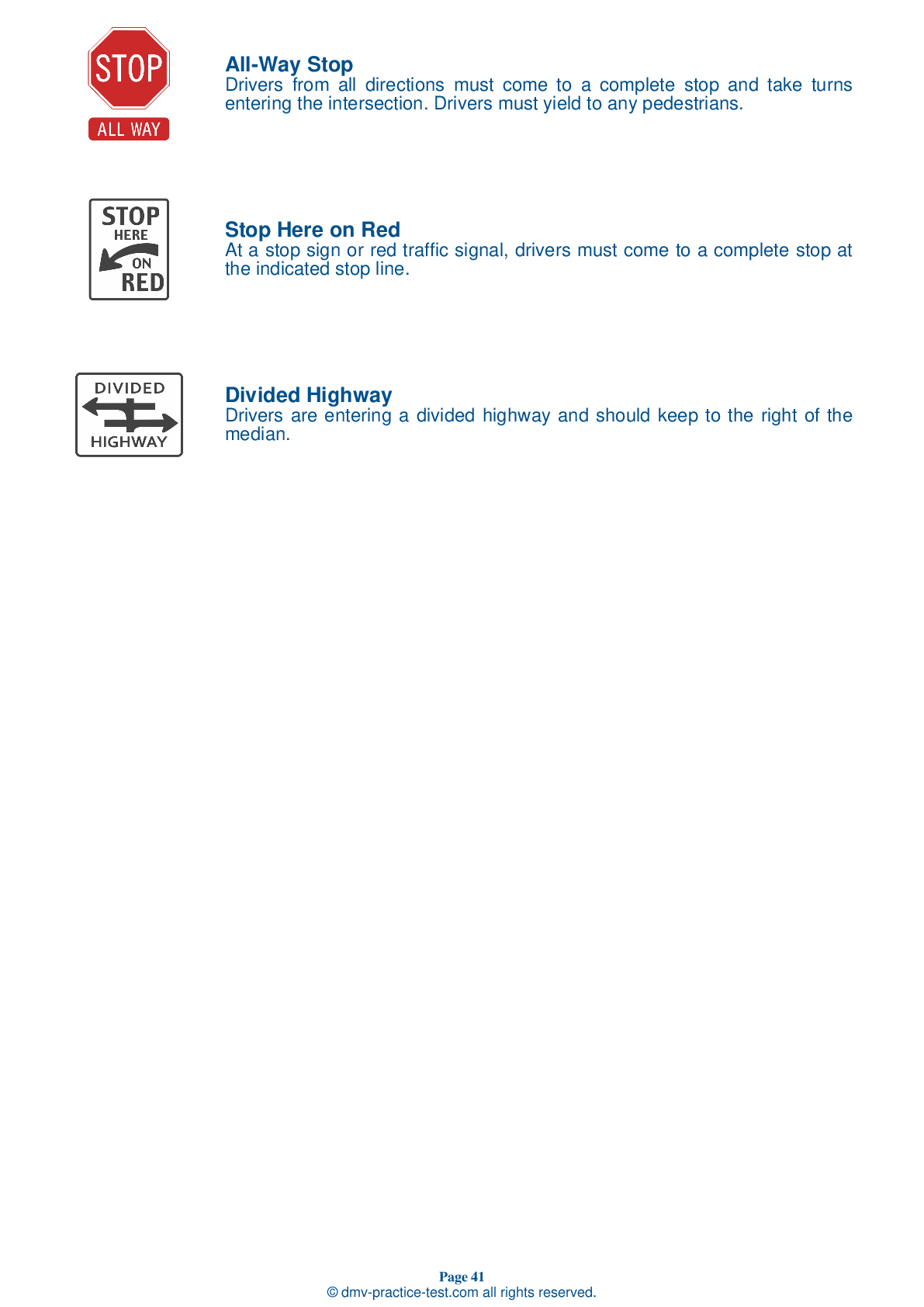FREE Florida DMV Practice Test #14 Page 2 of 7
This set of DMV practise tests for the Florida has been updated for January 2025. It includes questions based on the most important traffic signs and laws for 2025 from the Florida Driver Handbook. To study for the DMV driving permit test and driver's licence exam, use actual questions that are very similar (often identical!) to the DMV driving permit test and driver's licence exam.
Each question on the practise exam has a tip and explanation to help you recall the ideas. Questions about traffic rules, traffic signs, and driving statutes, as well as information from the Driver Handbook, will be included in the written portion of the official DMV test.
You must properly answer 40 of the 50 questions to receive the required passing mark. To help you prepare for your Florida instruction permit or driver's licence, take our DMV practise test.
The DMV exam is offered in a variety of languages.
Using any kind of testing assistance will result in an automatic fail, and the DMV may take additional action against your driver's licence, so stay away from it.
8 . A traffic light displaying a green arrow and a red light means that:
If a green arrow is shown with a red light, you can only drive in the direction of the arrow and only if the intersection is clear.
9 . Distracted drivers are at a greater risk of a crash when they are using which of the following?
Using a cell phone (including a hands-free phone) or any kind of audio device (including a radio or CD player) can be a dangerous distraction and contributes to the risk of a crash.
10 . A regulatory sign containing a red circle with a slash through the middle indicates:
Some regulatory signs prohibit certain actions. These signs are rectangular and white with red and black markings. A red circle and slash on top of a black symbol indicates that the specified action is forbidden.
11 . You are driving when it begins to rain. You should:
When heavy rain reduces visibility, reduce your speed. Turn on your headlights so other drivers can see your vehicle. If the rain is so heavy that you are unable to see clearly, drive onto the shoulder and stop until the rain lets up.
12 . You are entering a crowded freeway. What should you do to merge into traffic?
Use the entrance ramp to accelerate to the speed of freeway traffic and yield to traffic already using the freeway. Before entering traffic, use your mirrors and check your blind spots to verify that you have room to safely merge.
13 . At night, it is hardest to see:
Compared to signs and other roadside objects, pedestrians are hardest to see at night.
14 . When you see this black and yellow sign, it means:




